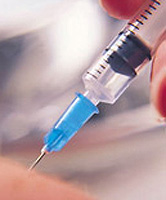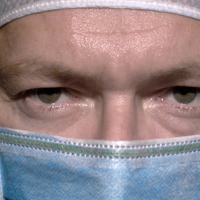Feochromocytoma, in the case of it timely detection, is very successfully treated. What means of diagnosing this ailment has modern medicine? The answer to this question you will find in this article.
Content
Feochromocytoma - a disease caused by a benign or malignant tumor of the specific tissue tissue, in which the hormones of catecholamines (adrenaline, norepinenaline) are produced, and when the tumor is developed, the secretion of catecholamines becomes excessive; or a tumor that is not in the adrenal glands, but in any other place that secrete the excess amount of catecholamines. Source for such a tumor can serve as special cells that can produce catecholamines, but after birth do not function.
In 85-90% of cases, the feochromocytoma is localized in adrenal glands - more often in the right, although in 10% of cases a tumor is two-way. In other cases, the tumor has an outdoor localization: can be detected in the region of the abdominal part of the aorta, the chest cavity, in the bladder region, head, neck. Feochromocytomes of non-propellant localization are more often diagnosed in children.
Feochromocytoma - tumors usually having a capsule, good blood supply, with a diameter of 1 to 12-14 cm and weighing from 1 to 60 g. There are large tumors. Hormonal tumor activity does not depend on its size. The tumor consists of brain layer cells of the adrenal glands.
Means of diagnosis of feuhromocytoma
It is important when the patient has characteristic complaints, determine whether these symptoms are a sign of feochromocytoma or a sign of a hypertonic disease occurring with periodic crises, that is, to carry out differential diagnosis between these diseases.
With the differential diagnosis of feochromocytomes and hypertension, the following symptoms must be taken into account:
- increasing the indicators of the main metabolism of substances that are detected using special analyzes at the peuochromocytoma; At the same time, the indicators associated with the work of the thyroid gland are normal;
- weight loss by 6-10 kg, and in some cases up to 15% or more of the ideal mass of the body;
- The young age of patients and the duration of arterial hypertension of no more than two years, as well as an unusual reaction of blood pressure on the use of certain medicinal substances that reduce it;
-
Violation of tolerance to carbohydrates (for example, periodic increase in blood sugar).
Specialists with a thorough analysis of more than 2 thousand histories of diseases of patients with arterial hypertension showed that the presence of headaches, heartbeat and sweating in such patients is an important criterion for the diagnosis of feochromocytoma. Frequent symptoms are also the pallor of the skin, anxiety. Relatively often constipation.
Proper diagnosis of disease helps conducting special samples:
-
 The sample with histamine is carried out at normal initial arterial pressure. The patient in a horizontal position is measured by blood pressure, then administered intravenously 0.05 mg of histamine in 0.5 ml of saline and measured blood pressure every minute for 15 minutes. In the first 30 seconds after the introduction of histamine, arterial pressure may decrease, but in the future its increase is observed. Increase digits by 60/40 mm Hg. Art. against the initial during the first 4 minutes after the administration of histamine indicates the presence of feochromocytomas.
The sample with histamine is carried out at normal initial arterial pressure. The patient in a horizontal position is measured by blood pressure, then administered intravenously 0.05 mg of histamine in 0.5 ml of saline and measured blood pressure every minute for 15 minutes. In the first 30 seconds after the introduction of histamine, arterial pressure may decrease, but in the future its increase is observed. Increase digits by 60/40 mm Hg. Art. against the initial during the first 4 minutes after the administration of histamine indicates the presence of feochromocytomas.
- Sample with tiramine. Held under the same conditions as the sample with histamine. 1 mg of tiramine intravenously is introduced, and an increase over 2 mines of systolic (upper) pressure on 20 mm RT. Art. and more allows me to suspect the presence of feochromocytoma.
- Sample with glucagon. An empty stomach is carried out under the same conditions: 0.5 or 1 mg of glucagon administered intravenously, blood pressure is measured every 30 seconds for 10 minutes. Sample results are the same as the introduction of histamine and Tiramine.
- Sample with clofelin. The patient in the lying position in a separate room, a catheter is introduced into the vein and after 30 minutes they take blood to determine the number of catecholamines in blood plasma. Then the patient takes inside of 0.3 mg of clofelin, and after 3 hours, blood is re-produced to determine the content of the specified hormones. In patients with a peochromocytoy, the content of hormones in the blood plasma after receiving clofelin does not change, while in patients with hypertensive disease, the level of norepinephrine is reduced to the norm and even lower.
-
There is also a clofelin-glucagonovaya sample, which is recommended in patients only with a slightly elevated level of catecholamines in blood plasma.
-
With constant arterial hypertension and arterial pressure not lower than 160/110 mm RT. Art. Applies a test with fantolamine (regitine) or a trop foam. Under the same conditions as when conducting a sample with histamine, intravenous 5 mg of fantolamine or 1 ml of 1% either 2% of the solution of TropaPhen. Reduced blood pressure for 5 minutes per 40/25 mm RT.Art. Compared to the initial make it possible to suspect the presence of feochromocytomas. It should be borne in mind that after the sample, patients must lie for 1.5-2 hours.
A large diagnostic value at a peuchromocytime is attached to hormonal studies: determining the level of catecholamines in the blood plasma and in the urine. An increase in the level of catecholamines in the blood is accompanied by an increase in the selection with urine as catecholamines and substances that are formed after their decay. Especially illustably comparing the content of catecholamines in portions of urine collected to the attack, and their level in the portion of urine collected after the attack. The level of catecholamines varies in several tens of times.
To determine the localization of the tumor apply:
- Ultrasound;
- CT scan;
- Magnetic resonance imaging;
- Scanning of adrenal glands after the injection of a special substance;
-
Introduction of a catheter through a vein on the thigh and taking blood samples to determine the content of catecholamines.
According to statistics, the treatment of timely detected feochromocytomas is successful in 95% of cases.









